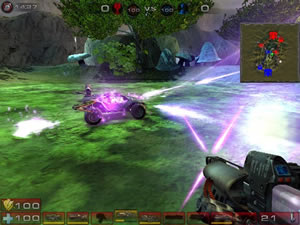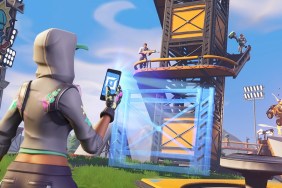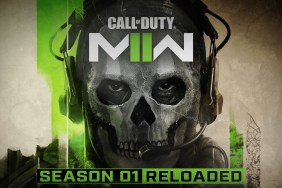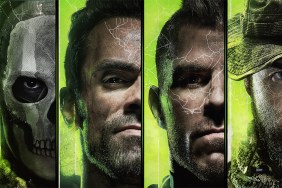The Unreal deal.
With so many solid releases over the past few years, the first-person shooter
genre has become a veritable Battle Royal, a brutal free-for-all as great games
stand toe to toe trying to hold the attention of fickle fraggers. But despite
such impressive upstarts as Call
of Duty, Battlefield: Vietnam and Far
Cry, it’s hard to bet against that cagey veteran, Unreal.
Amazingly, Unreal Tournament 2003 snuck past the GR radar last
year. How exactly did this happen? Well, I cannot tell a lie – monkeys stole
it! So when
Unreal Tournament 2004 came around, we built the fences higher
and laid traps baited with Vodka-soaked bananas. This one would not get away.
It’s a good thing, too. UT
2004 broadens the scope of the series with smooth integration of vehicles and new gameplay modes while retaining the customary level of white-knuckle intensity for which UT was originally revered.
UT 2004 is about as expansive an FPS as anyone could ask for. You’re offered 10 gameplay modes on or offline, played over a large number of vast indoor and Tribes-esque outdoor maps. Gameplay types are varied, from traditional Deathmatch and Capture the Flag to the more creative Assault and the fan-favorite, Onslaught. The variety is great and provides something for everyone.
Any gamer with a least an elementary school degree has played plenty of Deathmatch and CTF, both of which are handled well here, though things get much more interesting in the other game types.
Assault pits two teams against each other in a race to accomplish a set of objectives.
These include reaching key locations, using computers or destroying certain
enemy hardware. The objectives lend a point to the carnage and the inclusion
of vehicles and various turrets really helps keep the frantic firefights balanced.
Onslaught, the most widely-played mode, is an FPS tug-of-war in the vein of
the Battlefield series.
Each team starts at their own base with their own fleet of vehicles and battles
for control of a huge outdoor map. At each base is a power core; destroying this
is your main objective, but it cannot be done directly. The core must be linked
up with the smaller power nodes spread between the two opposing bases. So essentially,
players are fighting for control over as many power nodes as possible – control
of all the power nodes results in meltdown of the enemy’s core and victory
for your team. It requires a lot of skill, strategy and teamwork and is easily
one of the most exciting gameplay modes in this or any other FPS. It smells a
lot like Tribes
II‘s base battles, but is significantly less complicated.
 Perhaps
Perhaps
the most impressive new element in UT
2004 is the appearance of vehicles, which the game pulls off admirably.
Trucks, hovercraft, tanks and more are here and all control well thanks to a
solid physics system. The game verbally rewards gamers for pulling tricks and
aerial stunts in the Raptor fighter plane, jumps and two-wheeled action in the
Scorpion buggy as well as various tricks in the Manta hovercraft. It’s sci-fi
road rage at its best!
But UT 2004 is still all about fragging; the munitions are plentiful
and deadly. The game is full of all sorts of ballistic and energy-based weapons
and gun turrets that balance out the seemingly more effective vehicles. Zipping
along in a Manta hovercraft dealing heated plasma death may seem a bit unfair
against a soldier on foot, yet many of the weapons are more than strong enough
to dispatch even the heavier tanks, transport vehicles and aircraft. The rocket
launcher features a handy lock-on, sending up to three rockets tracking enemies
for what seems like miles over the open landscape. Conversely, those who prefer
to drive will find the Link Gun’s alternate fire handy for repairing their broken
rides.
Of
course, Unreal became popular in the first place due to its
now-legendary game engine; this
latest incarnation is stunning. The framerate is silky smooth and scalable to
work well on lower-end systems. The textures are rich, vibrant and meticulously
detailed. Particle effects dazzle as energy blasts explode on various surfaces.
Stealing the visual spotlight is the terrific vehicle physics, which can result
in some spectacular crashes. Destroying a speeding Manta, for instance, can yield
all sorts of eye candy; the momentum may carry the flaming heap turning end over
end and flattening an unsuspecting player. Satisfaction guaranteed!
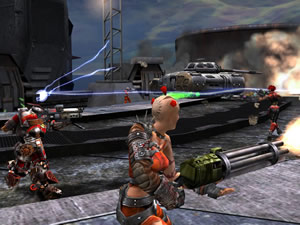 Again,
Again,
all this fun can be had on or offline. While the former is easily the game’s
focus, UT
2004‘s offline component is better than it ever has been. Initially,
all the gameplay modes are not readily available. You must do well in the standard
Deathmatch and Capture the Flag modes to earn credits, which can then be used
to purchase more advanced gameplay modes. Normally this wouldn’t be very interesting,
but the bots are pretty darn smart and even operate the vehicles with a certain
degree of skill. Though playing offline doesn’t compare
to the much more satisfying multiplayer, the smart bots make it worthwhile
and will keep you from making a noob out of yourself when you decide to play
against real people.
There’s really not much wrong here, though the fact that it takes up a whopping 5.5 GB of your hard drive might force some uninstalls of other games. Plus, for all the gameplay modes, none are particularly original. You still respawn almost immediately after dying, relieving any real tension or fear of death. UT
2004 is also a tough game with a pretty steep learning curve for some of the gameplay modes.
But despite these minor grievances, UT 2004 gets serious props.
Marrying the best elements of traditional UT with Halo, Tribes
II and a bit of the Battlefield series, the game serves
up intricate, breakneck battles at blinding speeds. The introduction of vehicles
and new gameplay modes expands the series in fresh directions, leading to a game
that actually lives up to its grandiose name.
